Does this cross beam look fuzzy to you? That's because it has a large accumulation of algae and hydroids growing amidst the coral and sponges.
There are 14 sites listed in the National Marine Sanctuary System,
but only one is located in the Gulf of Mexico- the Flower Garden Banks National Marine Sanctuary.
Oil platforms play an integral role in providing hard substrate for the coral species that call their legs home. To give you an idea of the habitat size these platforms create, government scientists have estimated that a typical four-legged platform offers the equivalent of two to three acres of habitat. That's a lot of coral and fish!
Within the Flower Garden Banks (FGB) are two of the very few true coral reefs found in the northern Gulf of Mexico (GOM). The beams seen here are home to several species of coral including Yellow Pencil Coral (Madracis auretenra) and the painful, fire coral (Millepora alcicornis)- gloves are advised!
This Blue Angel fish is certainly at home on Platform A376, and he should be- a study completed in 2009 determined that Flower Garden Banks National Marine Sanctuary has some of the healthiest reefs in the tropical Caribbean and Gulf of Mexico
The fearsome barracuda is one of several predatory species (including silky sharks and hammerheads) that call the FGB platforms home. Did you know? They can sprint after their prey at speeds up to 25 miles per hour!
The Flower Garden Banks were originally discovered by snapper and grouper fishermen in the late 1800's. The fishermen named the banks after the brightly colored sponges, plants, and other marine life they could see on the colorful reefs below their boats.
Located 5.8 miles offshore, 188 feet deep and the source of the infamous 1969 Oil Spill in Santa Barbara
Jack Mackerel swarm around Platform Eureka's invertebrate-covered legs. Photo by: Caine Delacy
Two female Sheephead find shelter on Platform Euerka's crossbeam. The pinkish hue of their scales gives away their femininity- did you know Sheephead spend half of their lives as female and the other half as male? When they transform into a male their coloration also changes, from an all pink body to a black head and tail. Photo by: Caine Delacy
Emily gives the OK after another successful dive documenting the vibrant life found below CA's offshore oil and gas platforms.
Out of the shadows we see a Garibaldi, the California State Fish and also known to be extremely territorial. Here she fiercely guards her home on Platform Eureka. Photo by: Caine Delacy
A Jack Mackerel "bait ball" forms underneath the platform. This behavior is an instinctual defense mechanism, as a lone Mackerel is more likely to be eaten than a large group. Strength in numbers! Photo by: Caine Delacy
Sponges are master filters. They can filter an amount of water 100,000 times their size each day! That means a basketball-sized sponge could filter an entire residential pool in one day. Photo by: Joe Platko
Over time the Platform structure becomes encrusted with algae, tunicates, hard and soft corals, anemones and sponges; providing the foundation and primary production for this unique micro-ecosystem.


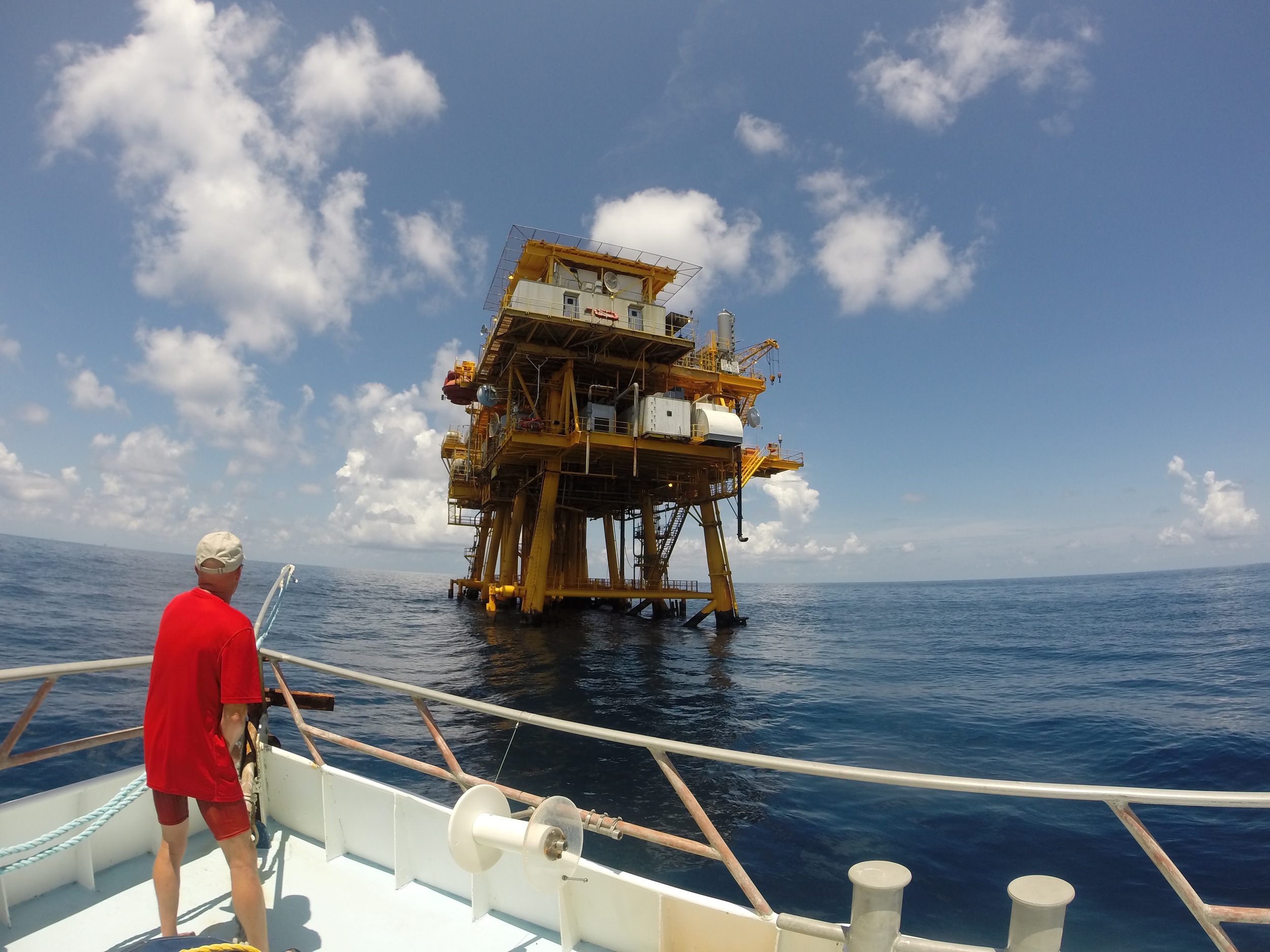

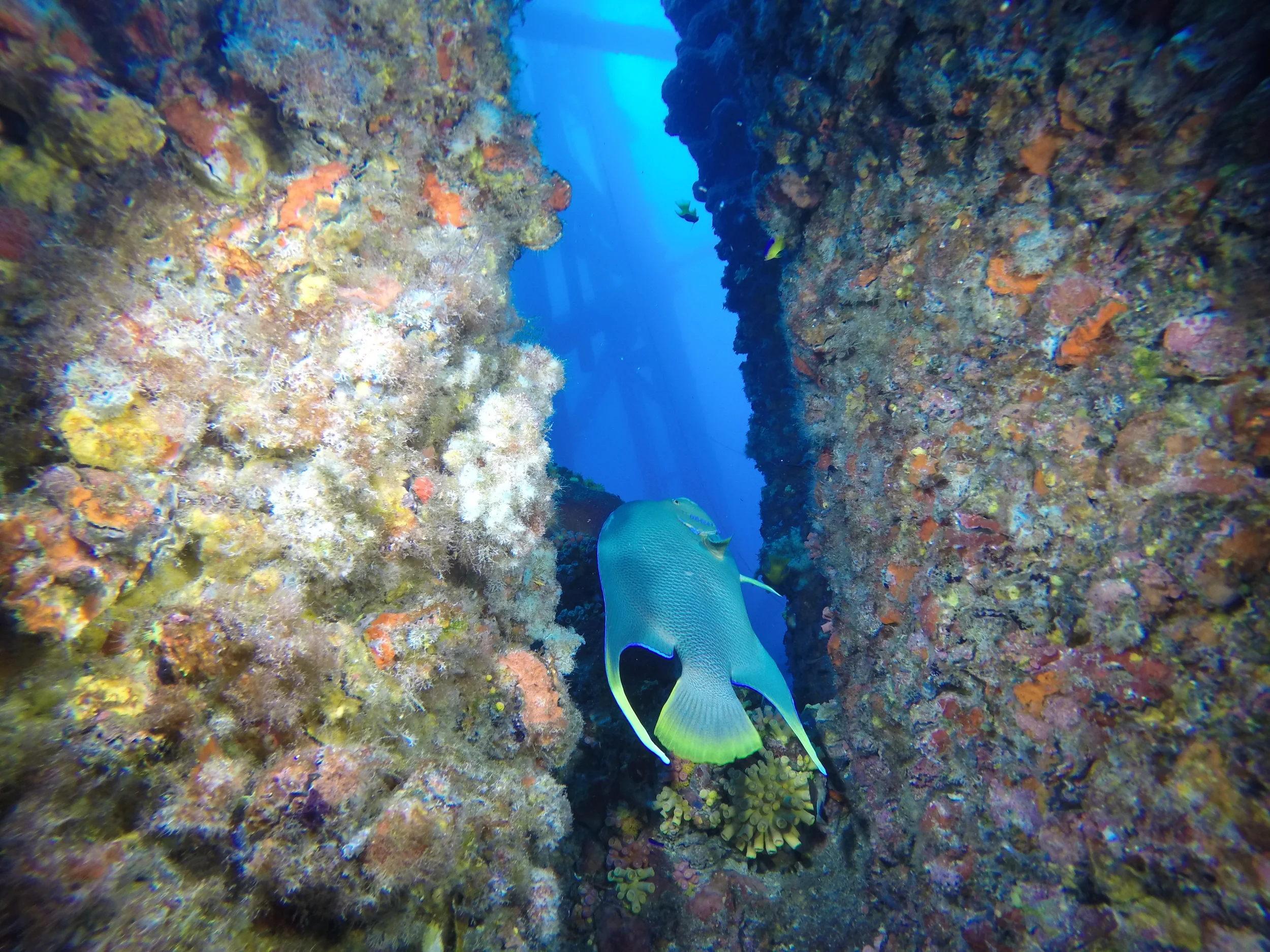





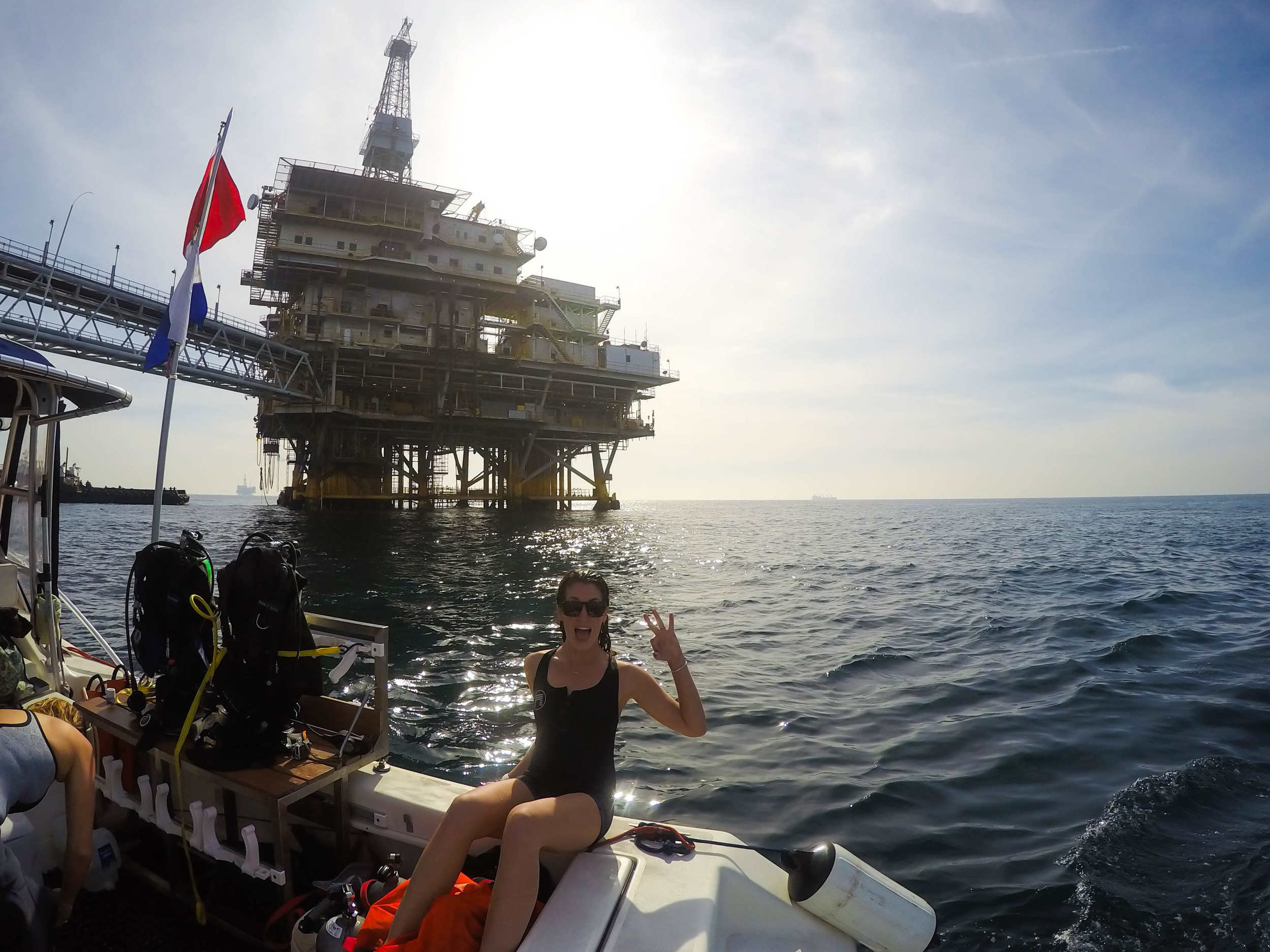









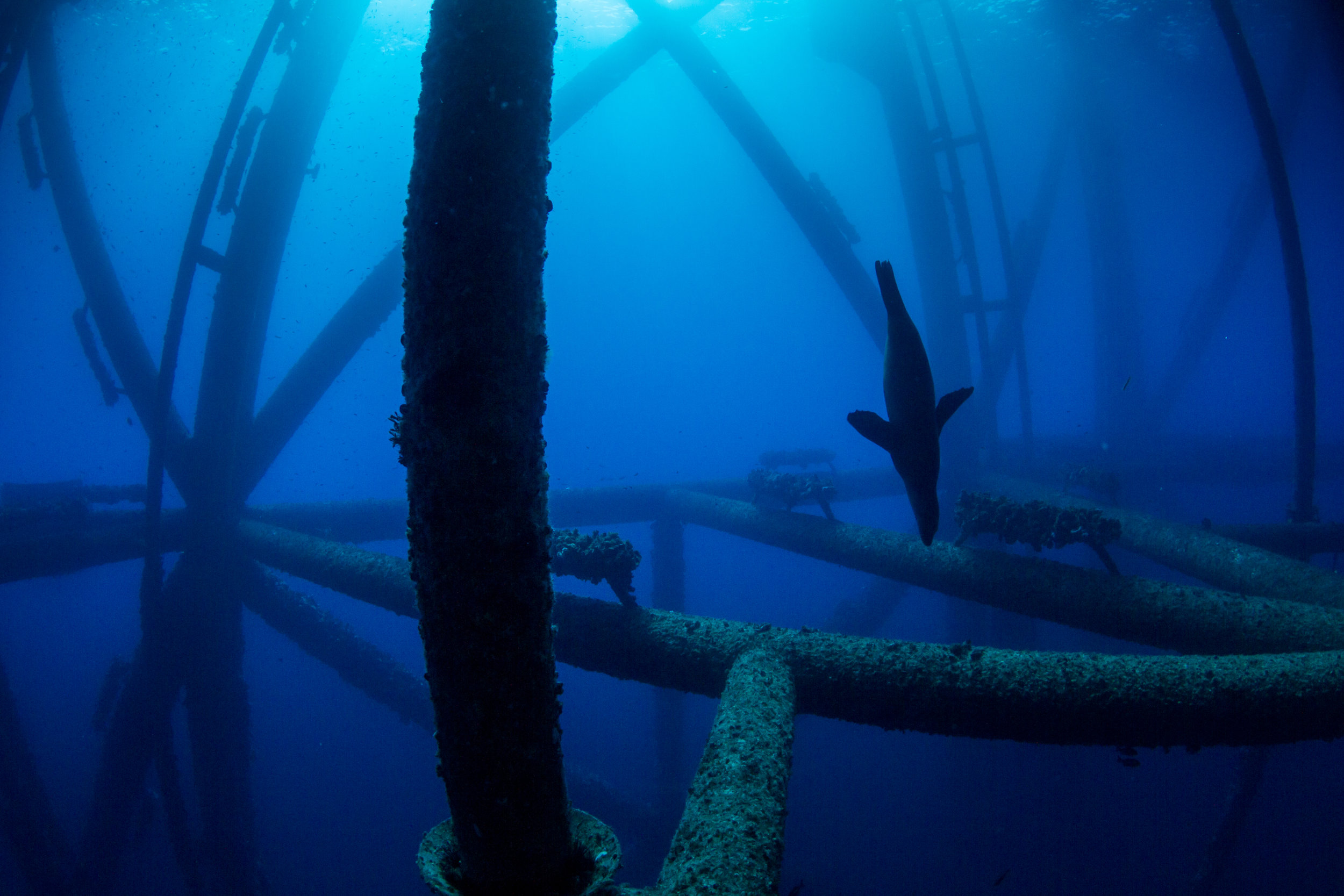
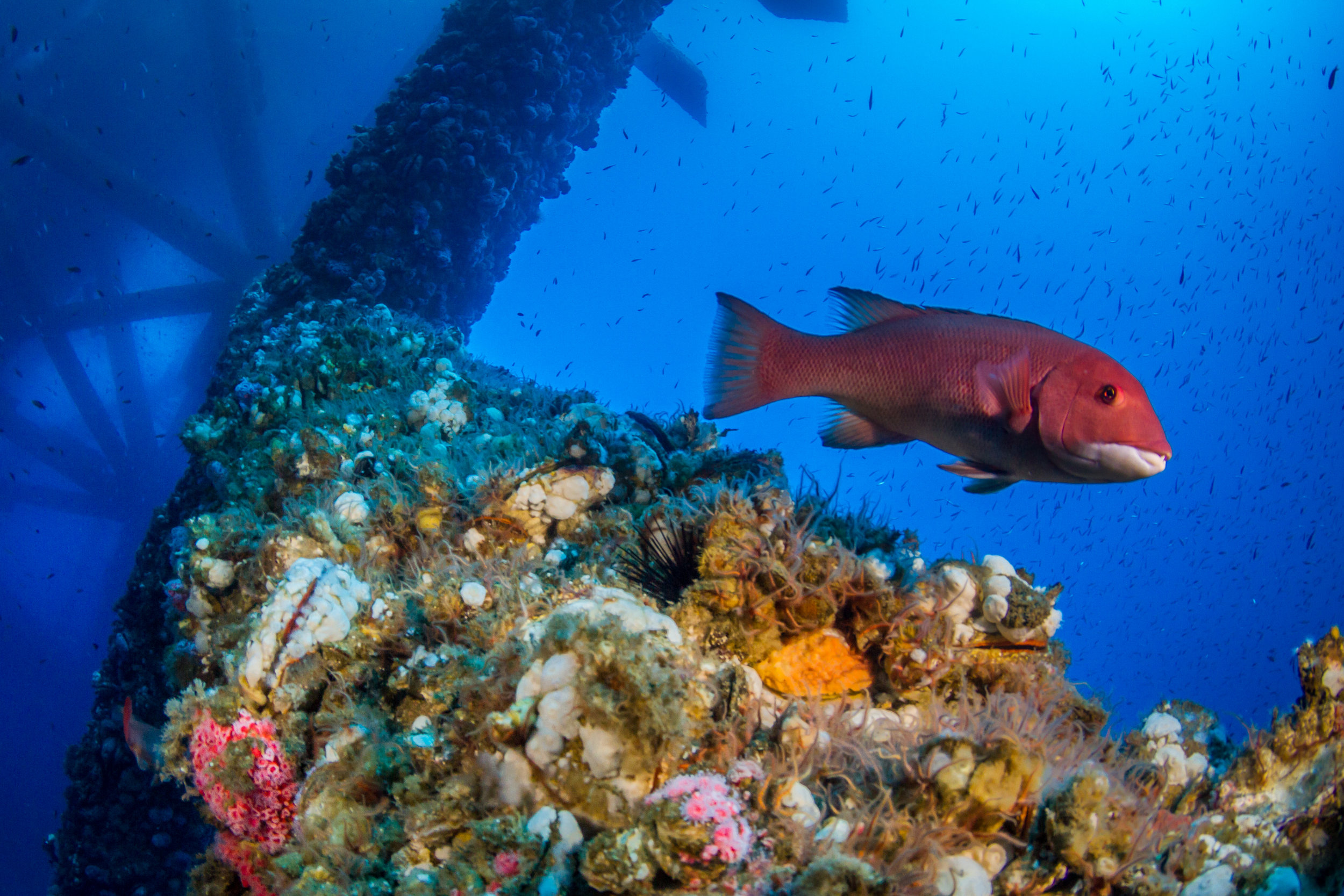
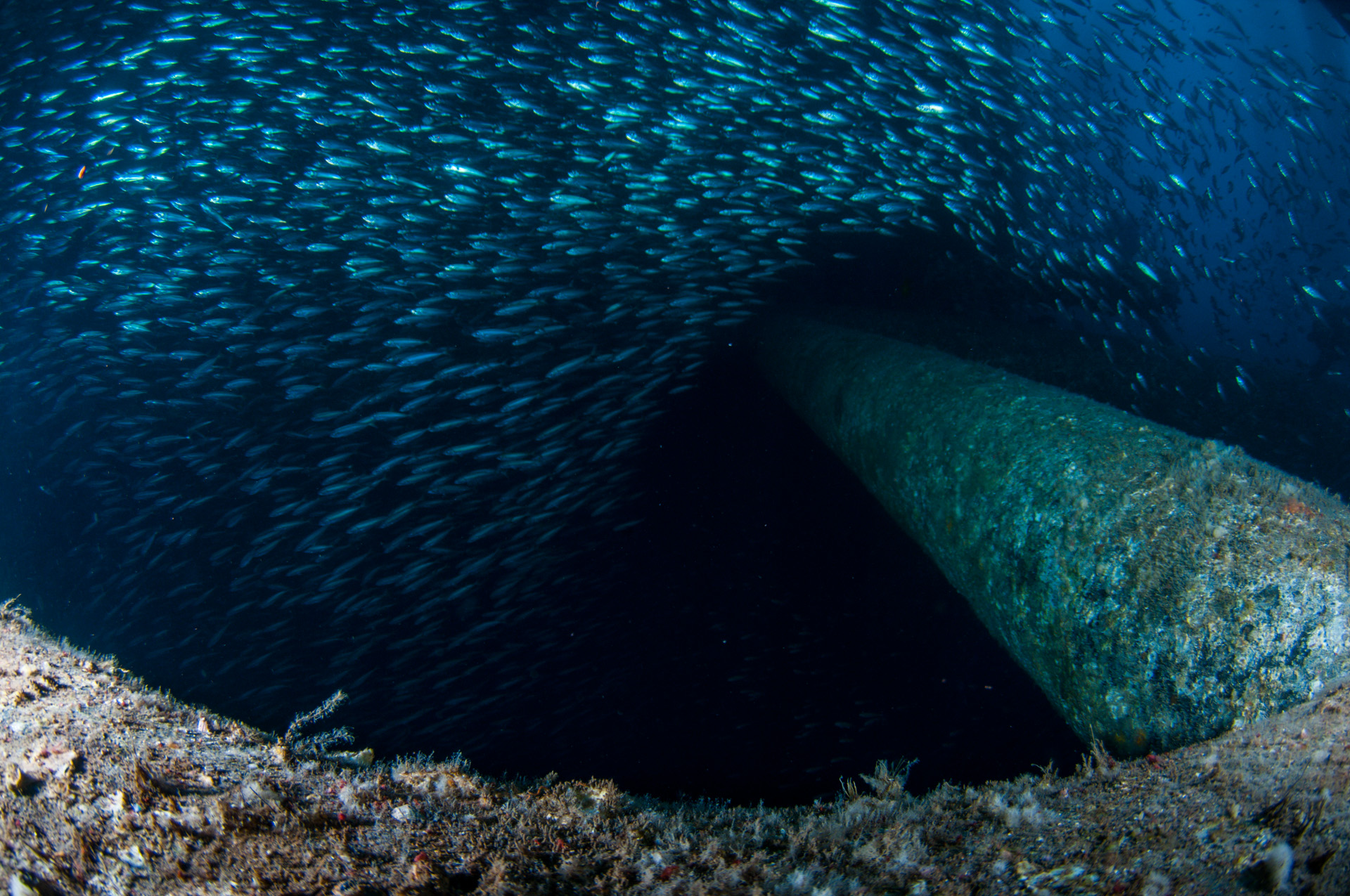

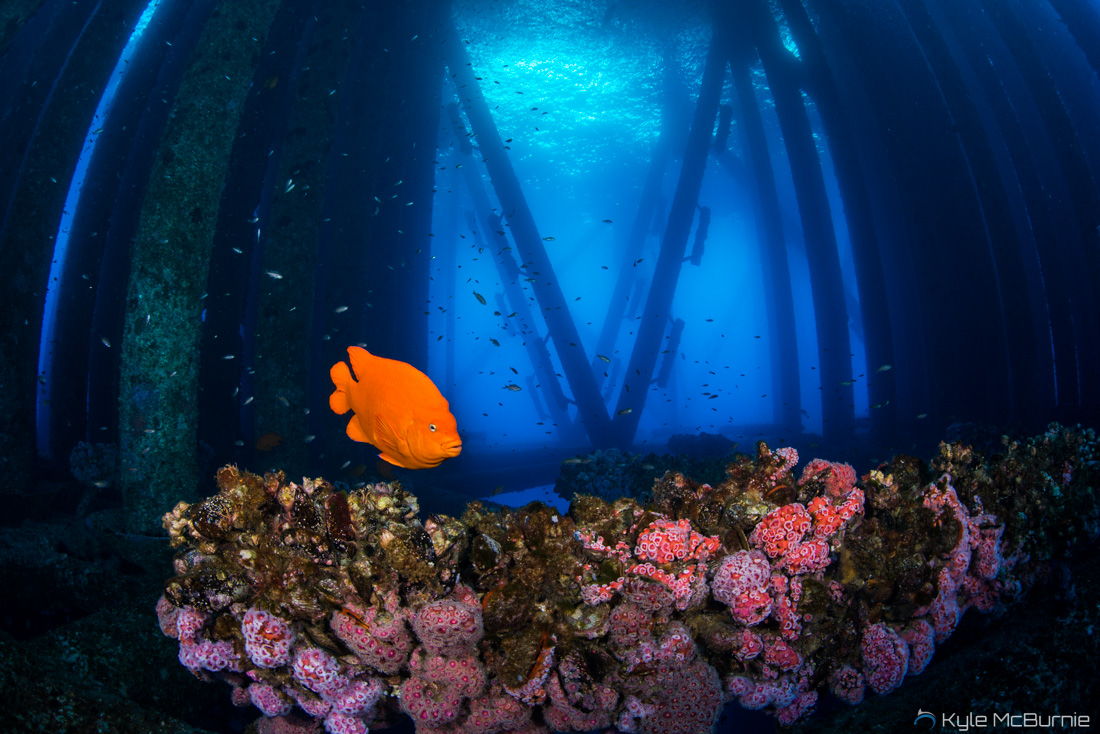
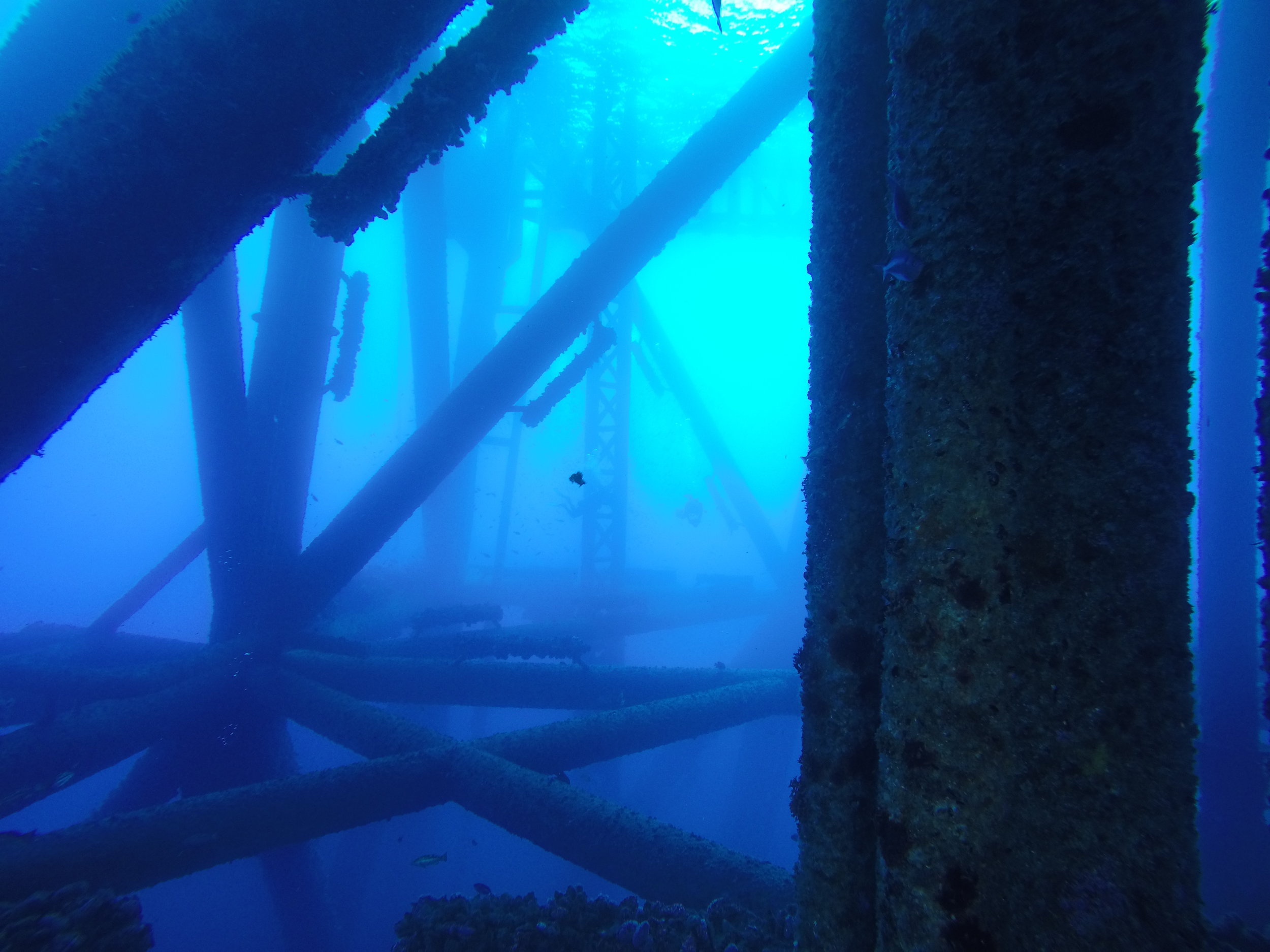
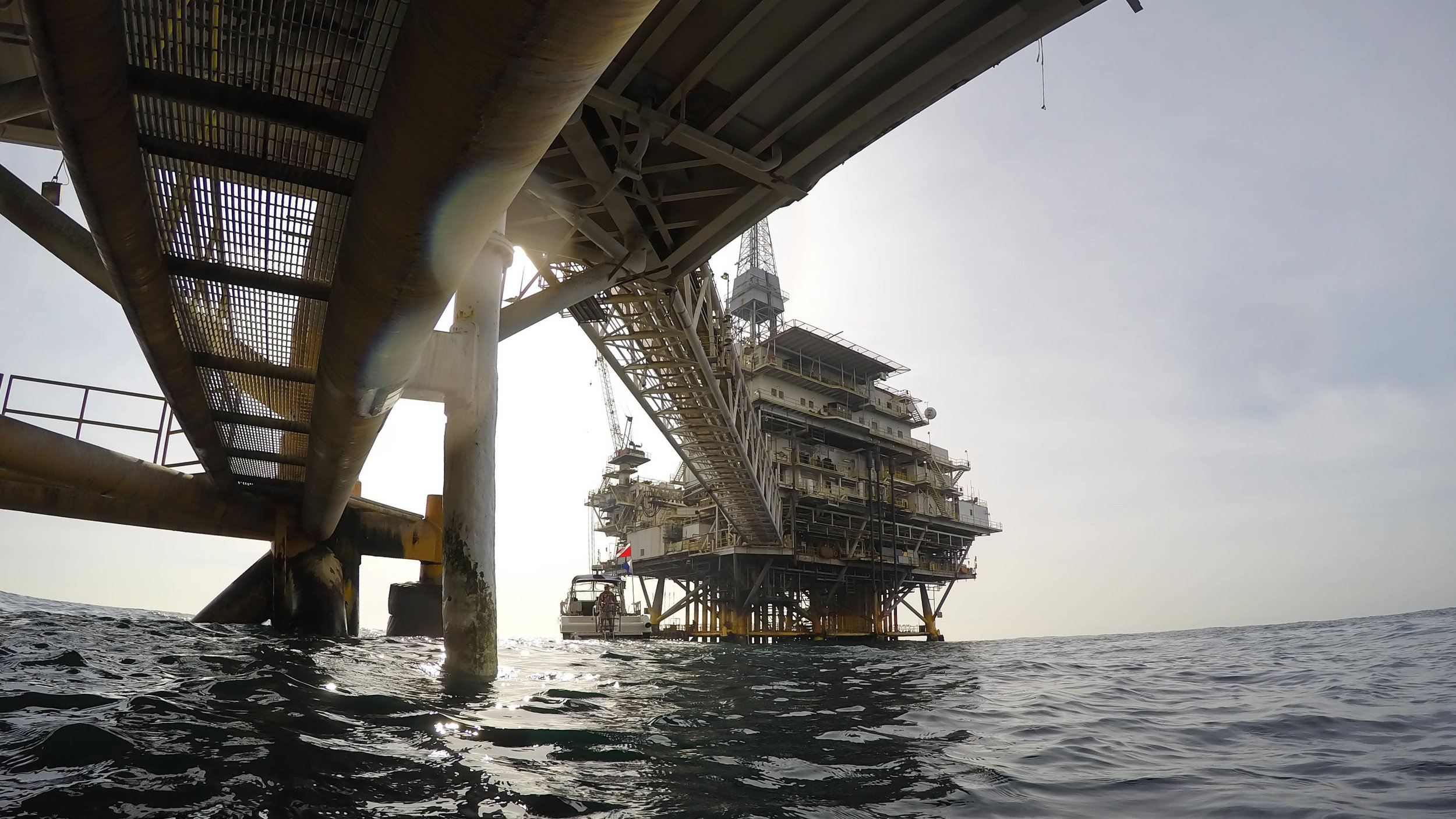
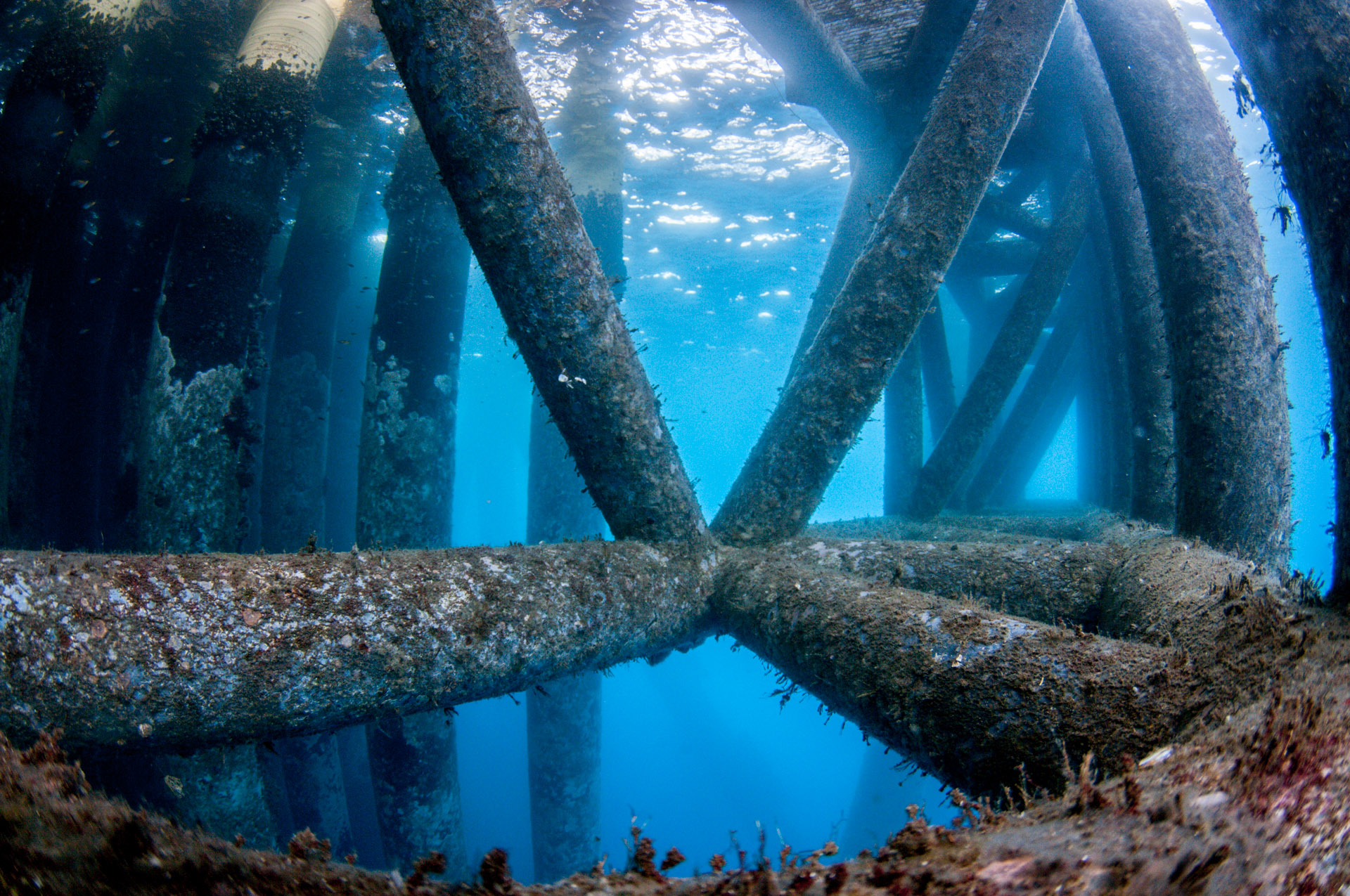

There over 3000 oil and gas Platforms in the Gulf of Mexico, some as far as 200 miles offshore! These platforms are host to an incredible coral reef habitat growing just below the surface. Here we see a large tube sponge. A number of small animals live inside the protective tubes that make up this sponge. These include the sponge cardinal fish (Phaeoptyx xenus) and several species of neon goby (Elacatinus spp.)!